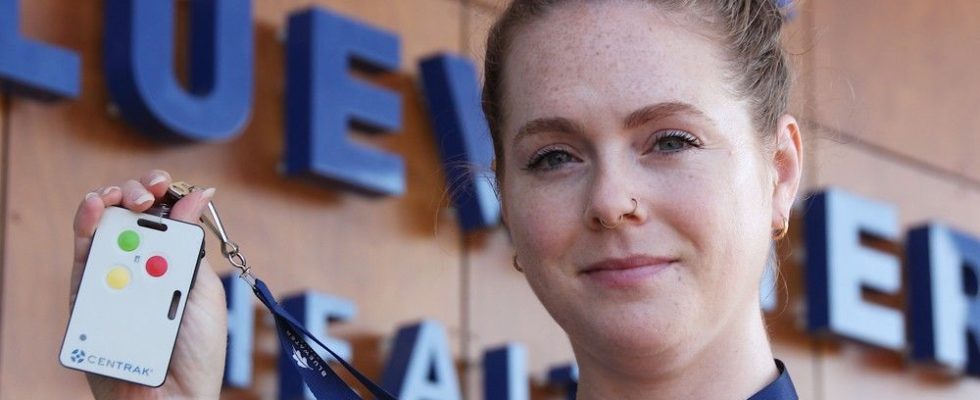Bluewater Health staff recently started carrying panic buttons.
Article content
Rolled out starting in July in inpatient mental health, emergency department and a treatment center for sexual assault and domestic violence in hospital, the “duress system” — a badge with buttons similar in size to staff identification badges — alerts security at the push of a button and pinpoints the person’s location in the hospital for a quicker response, said corporate services vice-president Marlene Kerwin.
Article content
“It just provides that added assurance for staff that if there are concerns, that they have easy access to security,” she said.
It’s part of a broader safety plan that includes a workplace violence prevention committee, check-ins during rounding, workplace violence prevention courses, access control, and investigations into every instance of workplace violence, she said.
Article content
Violence against health-care workers is a widespread problem in Ontario, and one that has historically gone under-reported amid fear of reprisal, researchers with ties to Sarnia reported in 2017.
Bluewater Health lost 430 days of staff time to violence in 2022, amid 210 reported incidents, hospital group statistics say.
Those numbers are both down so far in 2023, with about 80 incidents and 80 days lost through the first six months, the latest statistics show.
“Obviously we don’t want to have any workplace violence incidents, but we know they might happen,” Kerwin said. “So our focus is to try to make sure people are reporting them.”
The button system has worked well, she said, and replaces a nursing-station alarm system that didn’t pinpoint the person’s location.
Article content
All departments should be equipped with buttons by year’s end, she said.
Similar systems are in place at hospitals across Ontario, she noted.
The duress system is the first use of Bluewater Health’s $2-million real-time location system (RTLS) at Sarnia’s hospital that’s been built over the last three years, Kerwin said
The system includes data points built in throughout the building, so various tracking applications can be applied, she said.
Those applications could include: tracking patients in the hospital, so relative can better know when they’re in the operating room, recovery, or elsewhere; tagging high-value items to make sure they don’t leave the building; measuring temperature and humidity for critical equipment and locations and keeping wandering patients safe, she said.
“The first thing we really wanted to focus on was the staff duress (system),” she said, noting the old Spider system at nursing stations was nearing the end of its life.
“So the timing really made sense for us to make that our priority for the RTLS,” she said.
What happens next and when will be looked at more closely after all departments get duress system buttons, she said.
Two extra buttons on the staff badges, currently inactive, eventually will get extra uses, hospital officials said.
Share this article in your social network
